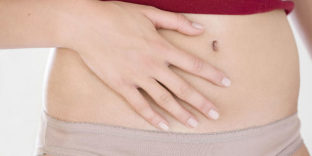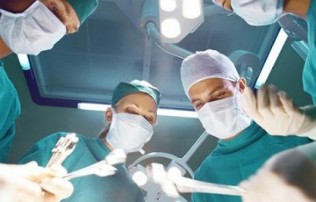Varicose veins of the pelvis — the disease is extremely unpleasant as varicose veins labia, also very dangerous, especially for pregnant women. How to treat and diagnose illness, as well as on projections for the future what we will cover in this article.

Features of the disease
Varicose vessels of the pelvis — extension of the weight of the ovaries and uterus in consequence of abnormalities, heredity and other causes. The disease affects all women of childbearing age, especially pregnant women and those whose work involves heavy physical conditions.
What is so dangerous than varicose veins of the internal organs of the pelvis during pregnancy? In this position, the disease must be treated by the doctor as dangerous to life of the patient and fetus because of the possible inflammation. Also, the disease is an indication for cesarean section.
On the causes and characteristics of varicose veins of the pelvis will tell you the following video:
Causes
Varicose veins are manifested on the background of pathology of the connective tissue. The main reason — the connective tissue dysplasia, in which the veins become thinner and bend easily.
In addition to a hereditary predisposition are risk factors that cause the appearance of varicose veins are:
- a sedentary lifestyle;
- the work associated with prolonged standing/sitting;
- frequent lifting;
- PPOs;
- lack of orgasm;
- frequent pregnancy and childbirth;
- the increase in estrogen levels;
- inflammatory gynecological diseases;
- tumor of the ovary;
Recent studies of the disease prove its relationship with the use of hormonal contraceptives. What are the symptoms of varicose veins of pelvic organs that require treatment, you will learn further.
Symptoms of varicose veins of small pelvis
The main symptoms of varicose veins pelvic — pain in the abdomen and the reinforced baseless discharge from the genitals. Most often, the pains are aching and drawing the character give in the groin and lower back. About half of patients the pain syndrome increases before menstruation, along with this manifest varicose veins of the perineum, buttocks and outer thighs.
Possible symptoms are:
- the presence of premenstrual syndrome;
- disorders of menstruation;
- increased sensitivity in the perineum;
Sometimes varicose veins accompanied by increased urination.
Diagnosis
The disease is difficult to significantly not only because of the location, but the absence of any characteristic symptoms. Often it is confused with inflammatory diseases of small pelvis and prescribe anti-inflammatory therapy that is either no effect, or minimally improves the condition of the patient.
For this reason, it is necessary to conduct differential diagnostics with diseases of the pelvic organs, e.g., cystitis, endometriosis, Crohn's disease and others. Finally confirm the diagnosis using hardware research:
- Ultrasound of the venous system Research allows you to see the varicose veins, their waves.
- Doppler. Reveals systolic velocity in the veins of the uterus and ovaries.
- Laparoscopy. Identify varicose veins in the region of the ovaries.
- Selective procedure. The most accurate study. Is performed by injection of contrast through the femoral and other veins.
- CT. Allows you to exclude pathology, to identify varicose veins in the uterus and ovaries, to show their curves and volume on the screen.
Also assigned additional studies to assess the condition of the patient, for example blood tests and x-rays. How to treat varicose veins of the pelvis, we shall speak next.
Treatment
The main treatment is in compliance with the therapeutic measures prescribed by a doctor. Generally, taking drugs and gymnastics are sufficient to normalize the patient's condition.
In rare cases, when the disease started and threatens the life of the fetus or mother, the doctors resort to surgery.
Therapeutic
A therapeutic method aimed at stopping reverse blood flow in the veins, normalizing their tone, enhance blood circulation and relieve symptoms. Therapy involves supplementation and exercise.

The main role of drug therapy in the treatment of varicose veins of the pelvis be given special drugs that improve venous tone, as well as drugs that prevent blood clots.
Surgical
Surgical treatment is prescribed at the lack of response to conservative, as well as for medical reasons. There are the following operations:
- The ligation of the veins of the ovary.
- Bandaging the genital vein.
- Operation Troyanov-Trendelenburg position, if struck by another, and the veins of the lower extremities.
The well showed embolization of the ovarian veins, as it features an easy recovery period.
The method of surgical intervention depends on the contraindications, the extent of the disease and the individual characteristics of its flow. In any case, it should be prescribed together with doctor.
About whether the treatment of varicose veins of small pelvis folk remedies, we will tell you more.
Traditional methods
To folk remedies for varicose veins include any procedures and infusions, contributing to the improvement of the veins, for example:
- chestnut;
- fungus;
- from the roots of dandelion;
Folk healers recommend the procedure with the application of leeches to the sacrum and the coccyx.
Please note! Treatment of folk remedies can not replace a conservative should run in conjunction with the latest! Before using any recipes you should consult a doctor to avoid negative consequences.
Exercise with varicose veins of small pelvis
Physical therapy for varicose veins of the pelvis consists of the following exercises:
- From a standing position, with feet placed parallel, rise on toes and down. Repeat up to 30 times.
- From a standing position, heels joined, toes apart. To rise on socks and fall up to 30 times.
- Stand straight, raise your heels apart, connecting socks. Rise on the toes 30 times.
- To make a "bike" and "birch", watching the full straightening of the legs.
Exercises can be performed anywhere. If you wish, you can replace, add or remove any exercises, most importantly, to ensure that the body is not too annoying. Exercise therapy should be combined with wearing compression hosiery.
Prevention of the disease
With proper prevention can avoid varicose veins in over 90% of cases. Preventive measures begin with regular visits to the doctor, consultation with a vascular surgeon. Also important:
limit physical activity and lifting heavy objects;
- engage in regular light physical exercise, physical therapy;
- to visit a massage therapist or do massage at home;
- to regulate the diet, limit the intake of carcinogens and animal fat;
- to monitor the regularity of bowel movement and to eat foods that promote normal bowel movement, for example, fiber or chicory;
- to take special medication course prescribed by your doctor;
Complications
Varicose veins, especially in the later stages, often complicated by bleeding dysfunctional uterine characterized by inflammation of the pelvic organs. This is due to violations of the outflow of blood and thinness of the vein walls.
Against the background of bleeding can develop thrombosis and the inflammatory process, therefore, if you notice the first symptoms, you must consult a doctor. Often attributed to the complications of thromboembolism, however, this condition other causes.

Forecast
The prediction result of varicose veins of pelvic organs in women depends on many aspects: the extent, location, presence of comorbidities and complications, the General condition of the patient. In General, in the absence of bleeding, the prognosis is favorable. More than 80% of the patients following the recommendations of the doctors feel positive.




































